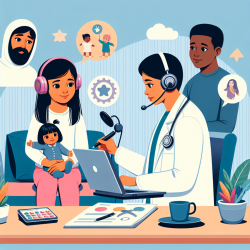Stuttering is a complex speech disorder that affects approximately 1% of the population, characterized by disruptions in speech fluency such as repetitions, prolongations, and blocks. Despite advancements in treatment, achieving lasting results remains a challenge. However, recent research offers promising new avenues for enhancing fluency interventions.
The Power of Delayed Auditory Feedback and Transcranial Direct Current Stimulation
A groundbreaking study has explored the combination of Delayed Auditory Feedback (DAF) and Transcranial Direct Current Stimulation (tDCS) to improve speech fluency in adults who stutter. DAF is a well-established method that alters the timing of auditory feedback to increase fluency. Meanwhile, tDCS is a noninvasive brain stimulation technique that uses a weak electrical current to modulate cortical excitability.
The study hypothesizes that stimulating the primary and secondary auditory areas with tDCS while using DAF could enhance the efficacy of speech therapy. This approach aims to address the pathological activation patterns observed in individuals who stutter, potentially leading to more stable and long-lasting improvements in speech fluency.
Research Methodology
The study was designed as a randomized, double-blind, sham-controlled clinical trial involving adults with moderate-to-severe stuttering. Participants were divided into two groups: one receiving real tDCS during DAF sessions and the other receiving sham stimulation. The intervention consisted of six sessions, with assessments conducted before, immediately after, and several weeks post-treatment.
The primary outcome measure was the percentage of stuttered syllables (SS%), while secondary outcomes included scores from the Stuttering Severity Instrument-Fourth Edition (SSI-4) and the Overall Assessment of the Speaker’s Experience of Stuttering (OASES).
Anticipated Outcomes
The researchers expect that combining tDCS with DAF will not only reduce SS% but also improve physical behavior and quality of life for adults who stutter. This innovative approach could represent a significant step forward in stuttering therapy by providing more effective and enduring results.
Implications for Practitioners
This study highlights the potential benefits of integrating advanced technologies like tDCS into traditional speech therapy practices. Practitioners are encouraged to consider these findings when developing treatment plans for individuals who stutter. By staying informed about emerging research and techniques, therapists can enhance their skills and offer more comprehensive care.
This research underscores the importance of ongoing exploration in the field of speech therapy. By embracing new methodologies and technologies, practitioners can continue to improve outcomes for those affected by stuttering.
If you're interested in learning more about this research or considering its application in your practice, you can access the full study through the provided link.










